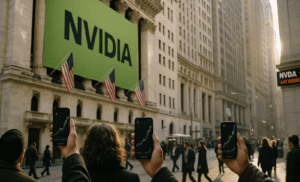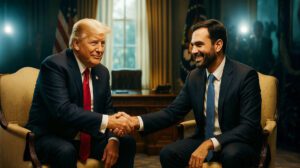On February 13, 2025, former U.S. President Donald Trump and Indian Prime Minister Narendra Modi met in Washington, D.C., to discuss the future of U.S.-India relations. The meeting, which took place amid growing economic and strategic partnerships between the two nations, focused on trade, defense, immigration, and global security.
A Meeting of Political Heavyweights
The Trump-Modi relationship has been characterized by mutual admiration and a focus on strengthening bilateral ties. This meeting came at a time when India and the U.S. are seeking to solidify their partnership in a world marked by shifting alliances and emerging global challenges. Both leaders have historically prioritized economic cooperation and defense collaboration, making this summit an important milestone in their ongoing engagement.
Key Takeaways from the Meeting
Strengthening Trade and Economic Ties
One of the primary focuses of the meeting was economic collaboration. President Trump announced that India has agreed to increase its imports of U.S. oil and natural gas, a move aimed at reducing America’s trade deficit with India. The two leaders also discussed expanding bilateral trade agreements, particularly in the technology and manufacturing sectors.
Additionally, Trump emphasized the potential for increased U.S. investment in India’s growing digital economy. As India continues its rapid technological expansion, U.S. companies are looking for opportunities to participate in India’s fintech, e-commerce, and artificial intelligence sectors.
Defense and Strategic Partnerships
Defense cooperation remains a cornerstone of U.S.-India relations. During their meeting, Trump and Modi discussed the possibility of India purchasing advanced U.S. military equipment. Trump noted that India is “looking very seriously” at acquiring F-35 fighter jets, which would significantly enhance India’s air defense capabilities. However, Indian officials later clarified that discussions on this front remain in their early stages.
The two leaders also reaffirmed their commitment to the Indo-Pacific strategy, a regional security initiative aimed at countering China’s growing influence. Trump praised India’s role in maintaining stability in the region, emphasizing the importance of collaboration through the Quadrilateral Security Dialogue (Quad), which includes the U.S., India, Japan, and Australia.
Immigration and Visas for Skilled Workers
Immigration policy was another major topic of discussion. Trump, who has long been vocal about tightening U.S. immigration laws, reiterated his stance on preventing illegal immigration. However, Modi pressed for expanded work visas for Indian professionals, particularly in the technology and healthcare industries.
With a growing demand for skilled labor in the U.S., Modi advocated for easing H-1B visa restrictions, a request that could benefit thousands of Indian IT professionals. According to NDTV, Trump acknowledged India’s contributions to the American economy but did not commit to any immediate policy changes.
Global Security and Diplomacy
Global security issues, particularly the Russia-Ukraine conflict and tensions in the Indo-Pacific, were also on the agenda. While Trump has taken a more isolationist approach to foreign policy, Modi emphasized India’s role as a stabilizing force in international diplomacy. India’s historical ties with Russia and its strategic partnerships with Western nations place it in a unique position to mediate global conflicts.
The two leaders also briefly touched on China’s aggressive stance in the South China Sea and border tensions between India and China. While no formal announcements were made, both sides expressed a commitment to strengthening their military and diplomatic cooperation to address regional security concerns.
Political Optics
The Trump-Modi meeting was not just about policy—it was also about optics. Trump, known for his theatrical style, once again praised Modi’s leadership skills. When asked who was the better negotiator, Trump quipped, “Not even a contest,” implying that he considered himself the superior dealmaker, according to BBC News.
Modi, in turn, maintained his usual diplomatic approach, highlighting the positive aspects of U.S.-India relations while avoiding controversial political topics. While both leaders have faced criticism for their populist approaches, their ability to connect with their respective voter bases remains a common thread in their leadership styles.
A Meeting with Future Implications
While no groundbreaking agreements emerged from the Trump-Modi meeting, the discussions reinforced the enduring nature of the U.S.-India partnership. The dialogue on trade, defense, and security reflects the strategic importance of collaboration between the two nations, even as political landscapes continue to shift.
The meeting underscored India’s growing global influence and the necessity of maintaining strong ties with the U.S. Regardless of political changes in Washington, the relationship between these two democratic giants will remain vital in shaping global economic and security frameworks.
















